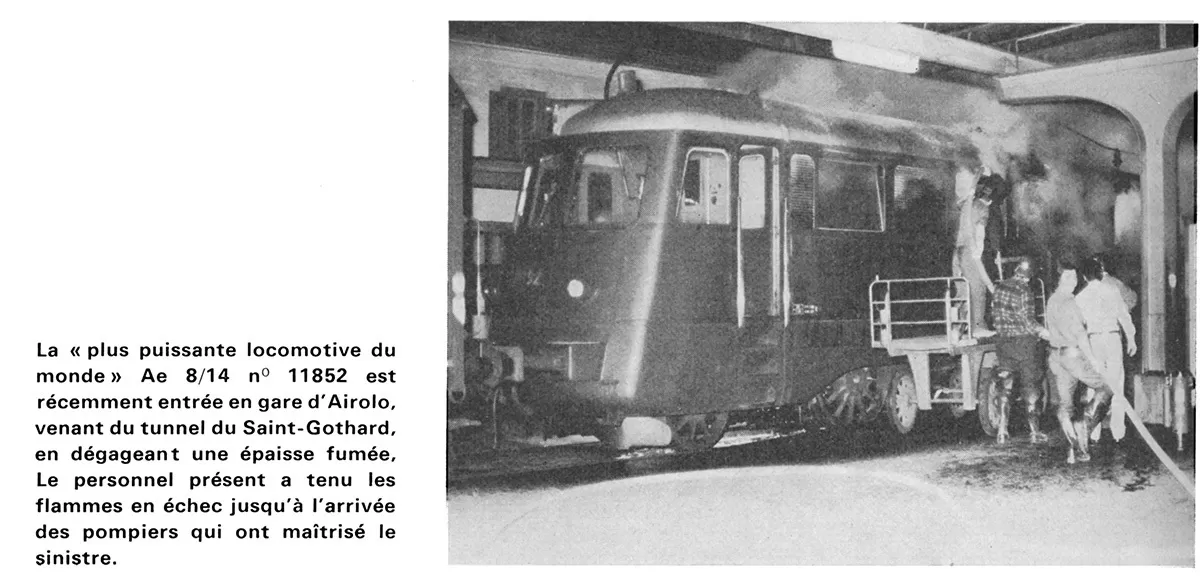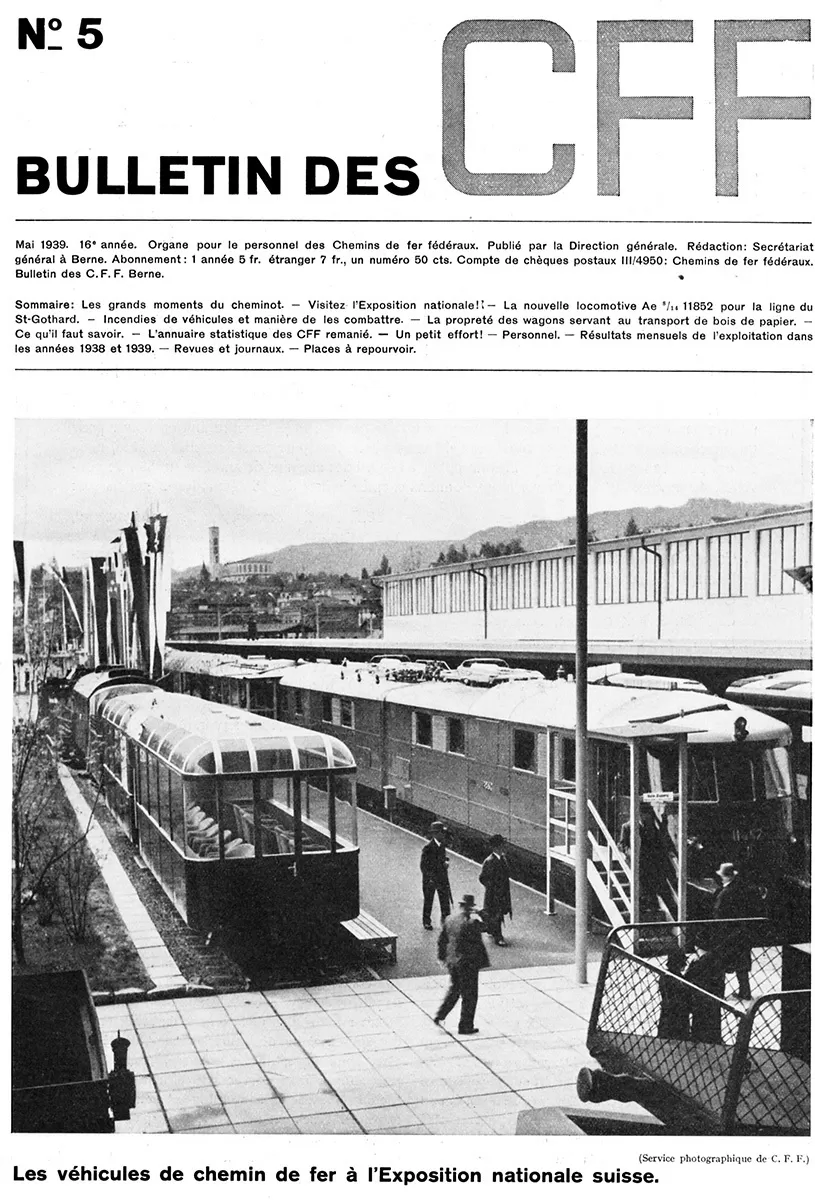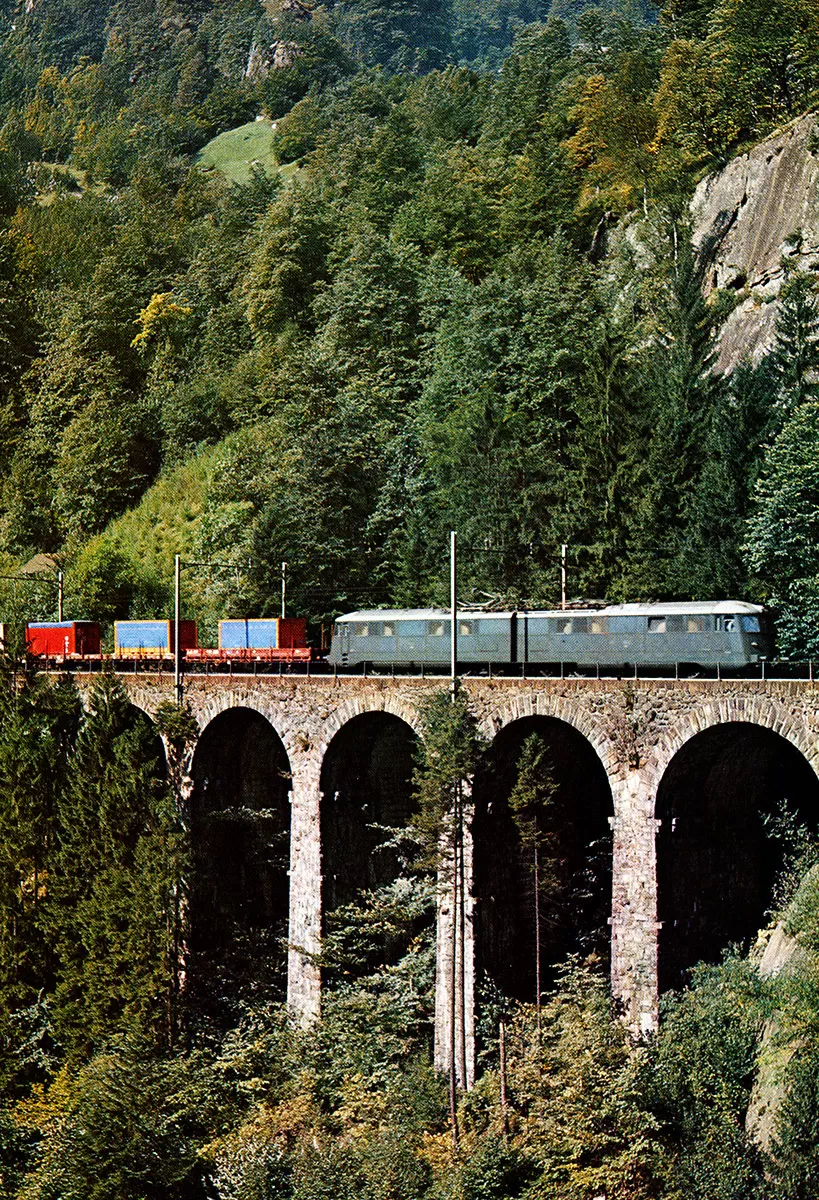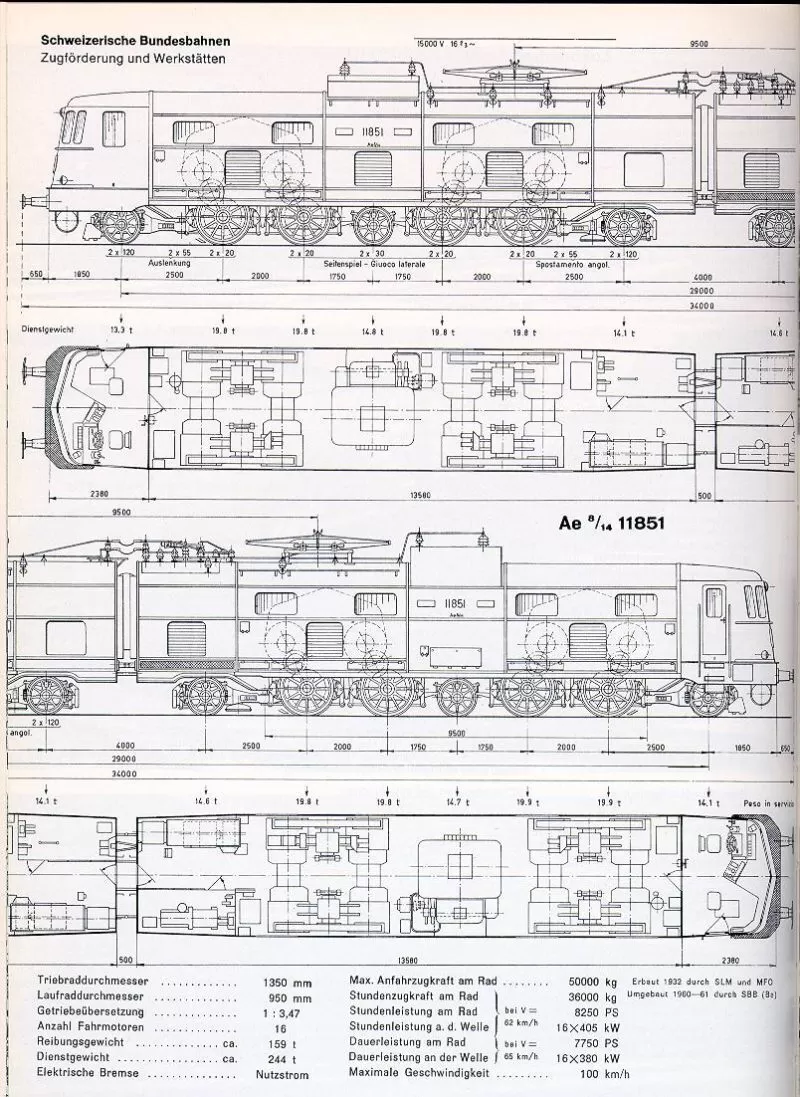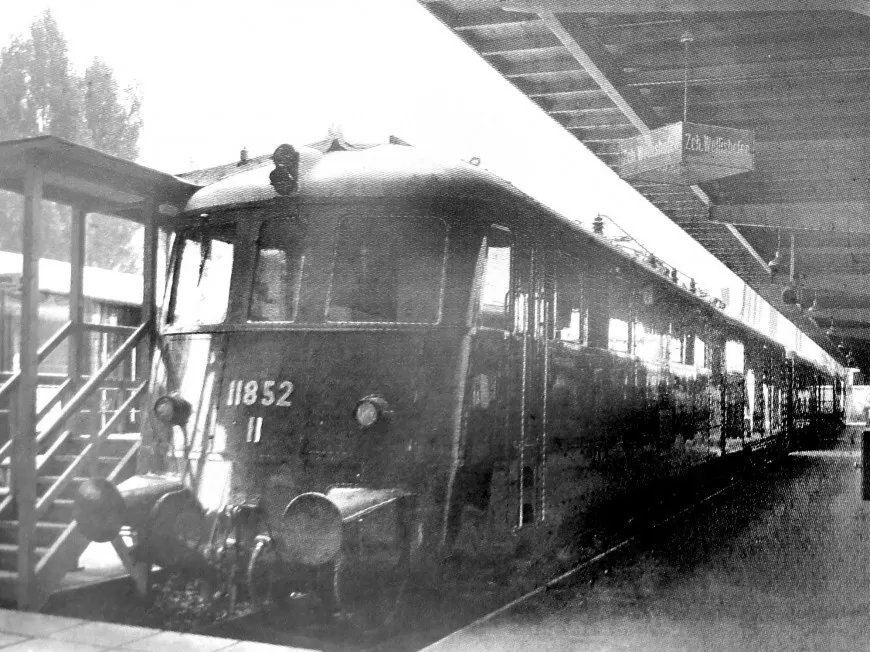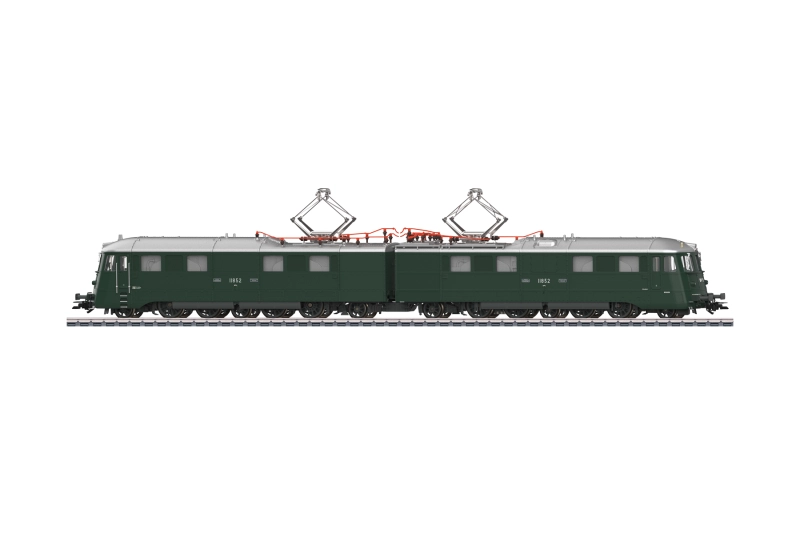
Source : Werner Brutzer

Source : commons.wikimedia.org

Source : Fototak
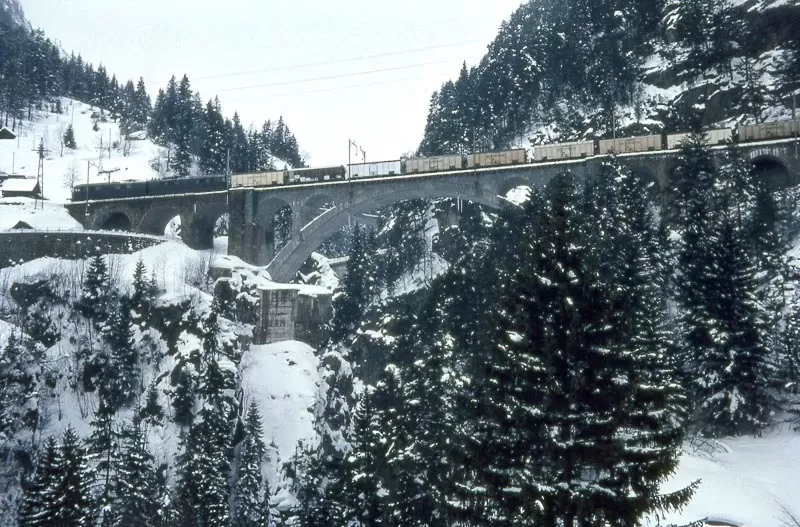
Source : Max Hintermann
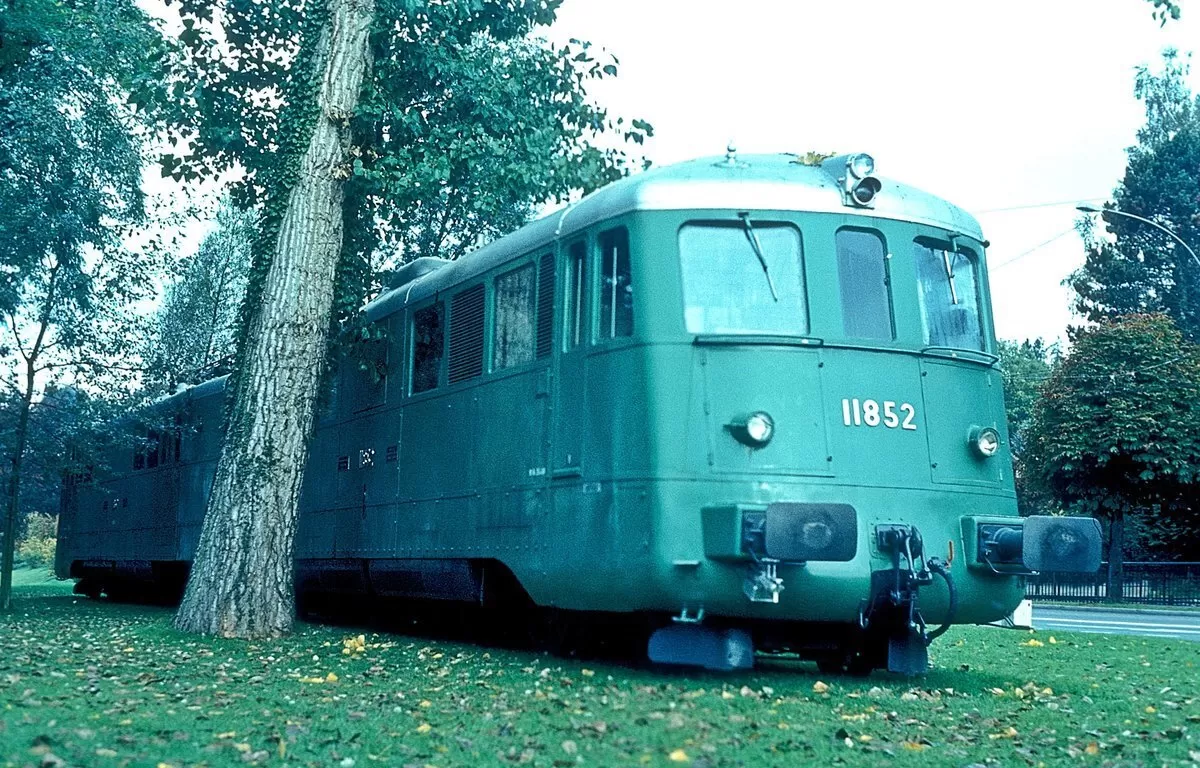
Source : Werner Brutzer

Source : Werner Brutzer
Type de véhicule:
Pays d'immatriculation:
The electrification of the Gotthard Line including its approach
routes from Lucerne to Chiasso was completed on May 18th, 1922. The
locomotives purchased for it (the classes Ce 6/8 II & III, Be 4/6
and Be 4/7) functioned extremely well and clearly showed the
advantages of electrical operation.
However, the new electric motive power soon meant increasing loads
and the situation on the Gotthard became increasingly tighter. In
neighbouring countries, there had soon been talk that loads over
the Gotthard could be moved quite a bit faster than previously.
Even though the electric locomotives of the first generation were
clearly more powerful than the last steam locomotives, they could
not take on endlessly increasing loads. A new locomotive class
should therefore provide a remedy. The first studies showed that a
locomotive with four sets of driving wheels would represent the
most favorable solution. Express trains of 600 metric tons would
have required two of these units in multiple unit control. There
were no multiple unit control for locomotives with electric brakes
for this power class, in which the units could be uncouples and
coupled again as often as desired.
The Swiss Federal Railways (SBB) therefore decided on a double
locomotive that was not separable in operation. This enabled a
savings in two engineer's cabs and various pieces of equipment only
required once. In February of 1929, the SBB requested the
locomotive builders to come up with designs for the desired unit
with a considerable specification profile. It had to be 100 km/h
fast and able to haul 600 metric ton passenger trains at 62 km/h
and 750 metric ton freight trains at 50 km/h on a 2.7% grade.
Electric regenerative brakes had to be able to stop the locomotive
weight on a 2.7% descending grade. After twenty submitted projects,
the SBB decided on the construction of one each prototypes from
designs by SLM/BBC and SLM/MFO.
1939
Ae 8/14 11852 entre en service
La troisième et dernière locomotive double de la série Ae 8/14 n'a pas pu tirer pleinement parti de sa puissance incroyable car les attelages du véhicule avant n'étaient pas en mesure de supporter la contrainte de son effort de traction maximal.
Concerne le(s) numéro(s) d'immatriculation: 11852
1963
Rénovation
De 1963 à 1971, la locomotive verte clair d'origine a été peinte dans le vert foncé typique des SBB de l'époque.
Concerne le(s) numéro(s) d'immatriculation: 11852
1972
Retraite
Concerne le(s) numéro(s) d'immatriculation: 11852
Avez-vous des informations supplémentaires concernant ce véhicule?
Aidez-nous à écrire l'histoire de Ae 8/14 11852! Votre savoir est précieux pour nous et pour toute la communauté, n'hésitez pas à partager vos faits, photos ou vidéos:
Dernière mise à jour le 22nd de January 2018 à 22:30
Contributeur(s): Tudor C.
Forum de discussion

